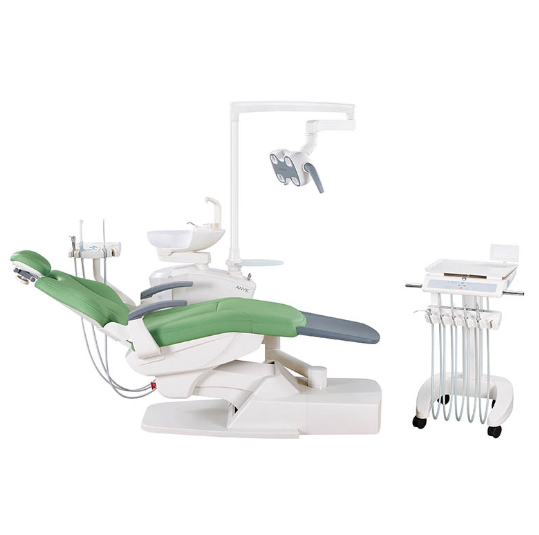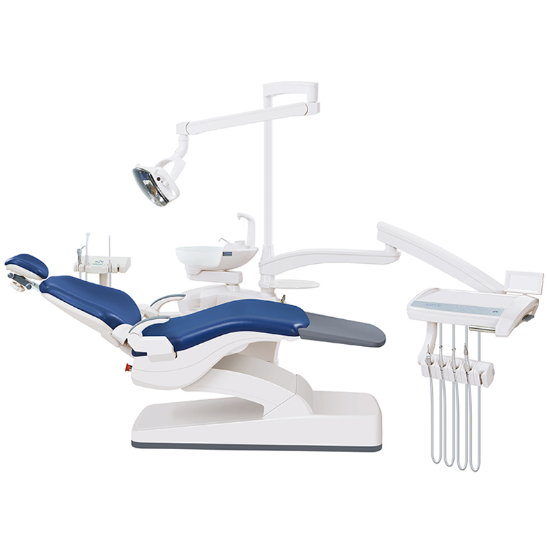What are the Uses of Compressed Air in Dental Unit?
In the realm of dentistry, the unsung hero facilitating precision and efficiency isn't just the skilled hands of a dentist—it's the humble dental chair compressor. This often-overlooked piece of equipment is a vital component in every dental unit, serving a multitude of functions that are essential for seamless operations and patient comfort. Today, this post would tell you everything about dental chair compressor.
How Does A Dental Air Compressor Work?
The inner workings of a dental air compressor are intricate yet ingenious. These machines operate by drawing in air and compressing it through a series of stages, resulting in pressurized air output.
A compressor typically consists of components like a motor, piston, valves, and an air tank. The motor initiates the compression process, while the piston compresses the incoming air, subsequently storing it in the tank until it's required for use in the dental unit.
A compressor typically consists of components like a motor, piston, valves, and an air tank. The motor initiates the compression process, while the piston compresses the incoming air, subsequently storing it in the tank until it's required for use in the dental unit.
What are the Uses of Compressed Air in Dental Unit?
Compressed air serves as the lifeblood of dental units, acting as a versatile and indispensable utility in various facets of dental procedures. Its uses encompass a wide array of crucial functions:
●Driving Handpieces
Compressed air fuels handpieces used by dentists for drilling, polishing, and other intricate procedures. It powers the turbines or motors within these tools, enabling precise and controlled movements essential for dental work.
●Operating Suction Devices
Suction devices that remove saliva and debris from the oral cavity rely on compressed air to function efficiently. This ensures a clean and dry field for dental procedures.
●Cooling Dental Tools
Compressed air aids in cooling dental instruments, preventing overheating during prolonged usage. This cooling effect maintains the efficiency of the tools and enhances patient comfort by minimizing heat generated during procedures.
●Drying Dental Materials
When applying materials like adhesives or sealants, compressed air is used to dry these substances quickly, ensuring their proper adhesion and effectiveness.
●Sterilizing Instruments
Compressed air is often employed in autoclaves, which use high-pressure steam to sterilize dental instruments. It contributes to creating a sterile environment necessary to prevent infections and ensure patient safety.
●Aiding in Infection Control
The compressed air is also used in air-water syringes and other equipment for rinsing and cleaning, helping maintain a hygienic environment during procedures.
●Operating Pneumatic Controls
Various controls and mechanisms within the dental unit, such as chair adjustments and operating light adjustments, are powered by compressed air.
●Supplying Air to Auxiliary Equipment
Other auxiliary equipment, like air polishers or air abrasion systems, also rely on compressed air to function effectively.
Why Choose an Oil-Free Compressor?
Among the options available, the oil-free dental air compressor stands out for its distinct advantages.
Unlike traditional compressors that rely on oil lubrication, oil-free compressors eliminate the risk of oil contaminants entering the compressed air stream.
This feature ensures a higher level of purity in the air supplied to dental tools, safeguarding both patient health and the longevity of equipment.
Unlike traditional compressors that rely on oil lubrication, oil-free compressors eliminate the risk of oil contaminants entering the compressed air stream.
This feature ensures a higher level of purity in the air supplied to dental tools, safeguarding both patient health and the longevity of equipment.
When Should You Replace Your Compressor?
The lifespan of a dental chair compressor largely depends on its usage, maintenance, and quality. Regular maintenance and timely servicing significantly prolong its lifespan.
However, signs of wear and tear, decreased efficiency, unusual noises, or persistent air quality issues indicate that it might be time for a replacement. Dental professionals should proactively monitor these indicators to ensure uninterrupted and optimal performance.
However, signs of wear and tear, decreased efficiency, unusual noises, or persistent air quality issues indicate that it might be time for a replacement. Dental professionals should proactively monitor these indicators to ensure uninterrupted and optimal performance.
Conclusion
The dental chair compressor, despite its unassuming appearance, plays a pivotal role in the functionality and success of every dental practice. Its role in delivering clean, pressurized air is indispensable, impacting not only the precision of procedures but also the overall patient experience.
Understanding its functions, maintenance needs, and replacement indicators is crucial for every dental professional to ensure seamless operations and high-quality care.
Understanding its functions, maintenance needs, and replacement indicators is crucial for every dental professional to ensure seamless operations and high-quality care.



Leave a comment